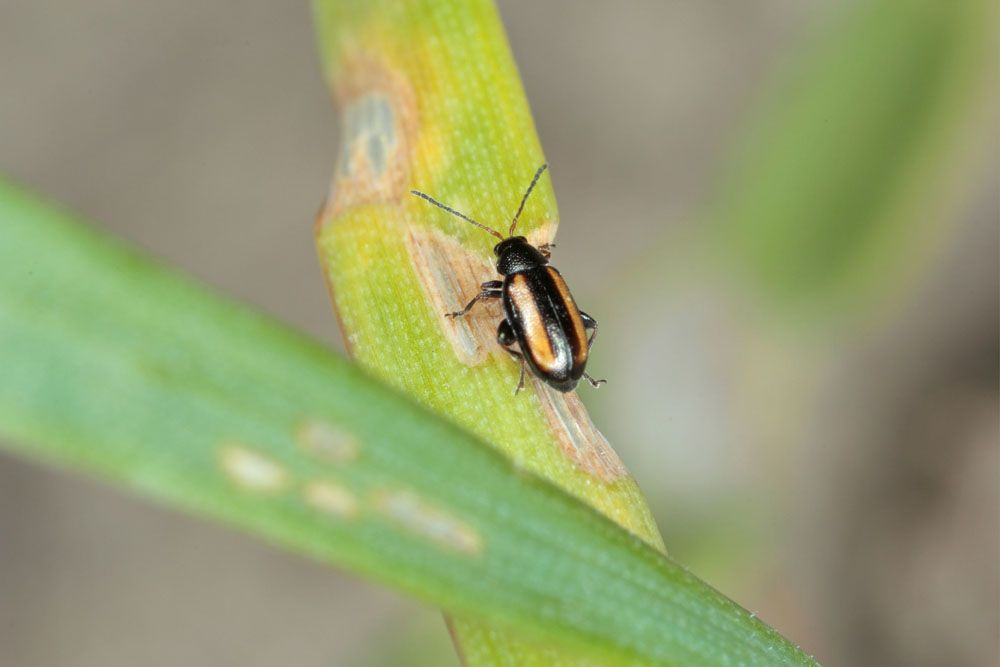
Palestriped Flea Beetles – Systena blanda
Palestriped Flea Beetles (Systena blanda)
Common Name: Palestriped Flea Beetles
Latin Name: Systena blanda
Appearance:
The Palestriped Flea Beetles are small, metallic beetles known for their characteristic jumping behaviour. They are usually 3-4 mm long and have glossy, metallic bodies. Their colors can range from metallic blue-black to greenish-bronze, and their elytra (wing coverings) have unique pastel stripes running along them.
Host Plants:
Palestriped Flea Beetles feed various plants, including maize, soybeans, and other members of the Solanaceae and Fabaceae families. They have been observed feeding on the leaves of several plants.
Territory:
These beetles can be found in numerous parts of North America where their host plants are grown.
Damages caused by Palestriped Flea Beetles:
Host plants can sustain harm from the feeding habits of Palestriped Flea Beetles. They cause tiny, asymmetrical holes in the leaves, which may impair the plant’s ability to photosynthesize and its general health. Severe infestations can seriously harm crops, mainly when they affect young or stressed plants.
Life History and Habits:
- Egg Stage:A female Palestriped Flea Beetle lays her eggs in the ground close to the root of her host plant to start the life cycle. Typically, the eggs are oval-shaped and tiny.
- Larval Stage:Once the eggs hatch, the larvae eat mostly the roots of plants, especially grasses. Before they pupate, they go through many instar phases.
- Pupal Stage:The mature larvae pupate in the soil. The transition from a larva to an adult beetle occurs during this stage.
- Adult Stage:Palestriped Flea Beetles come out of the ground as adults. They employ their capacity to leap between plants and are most active in warm weather.
